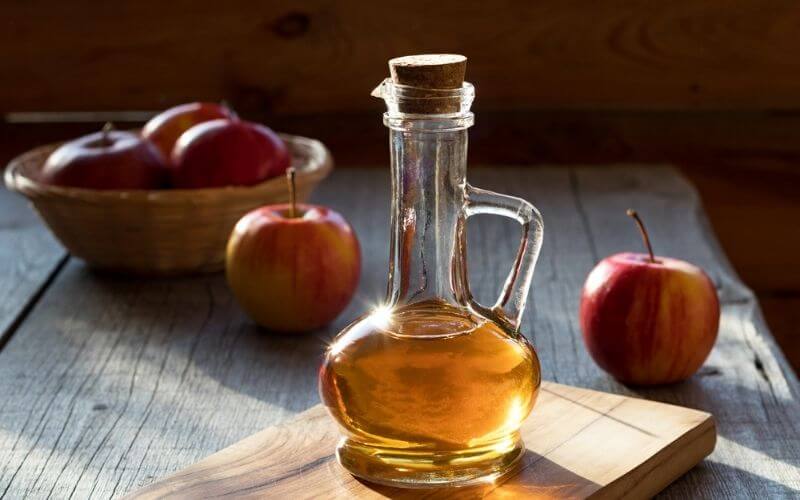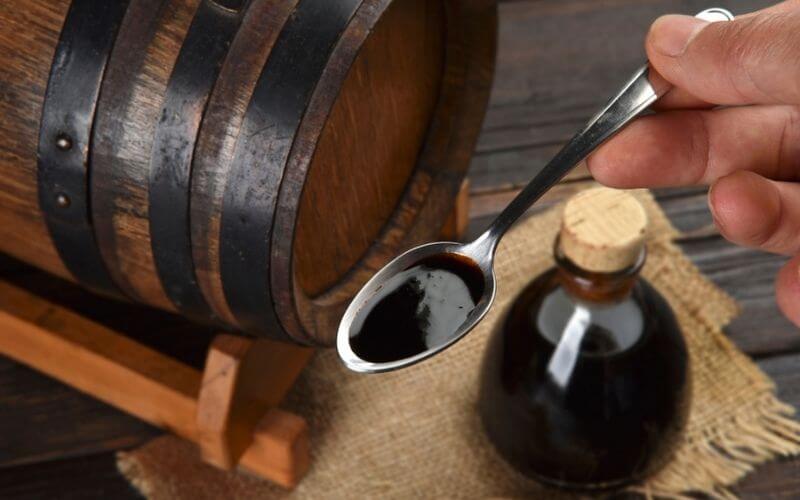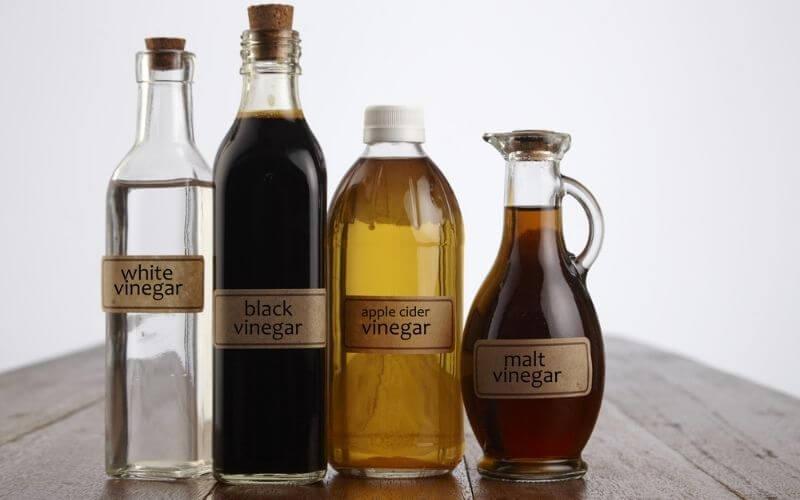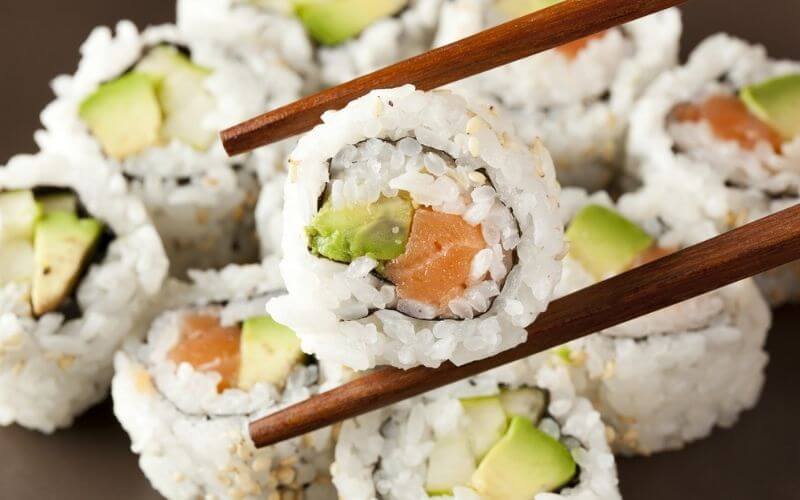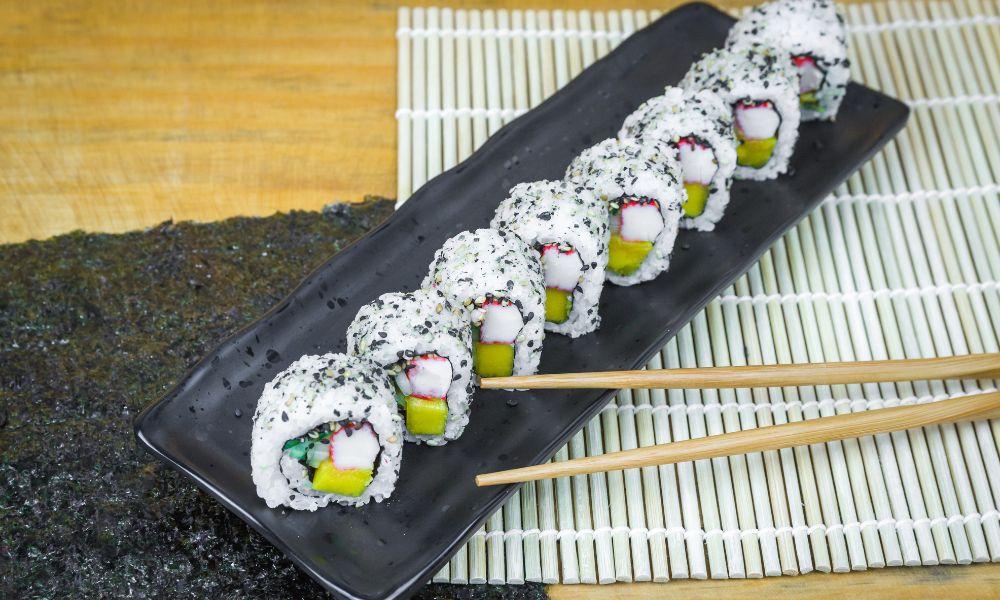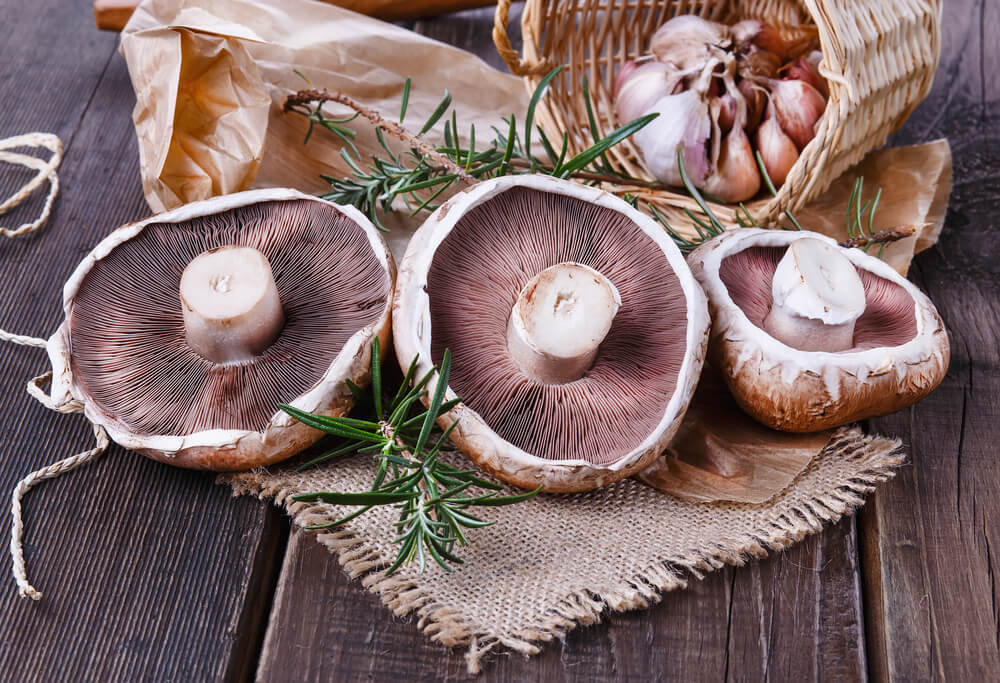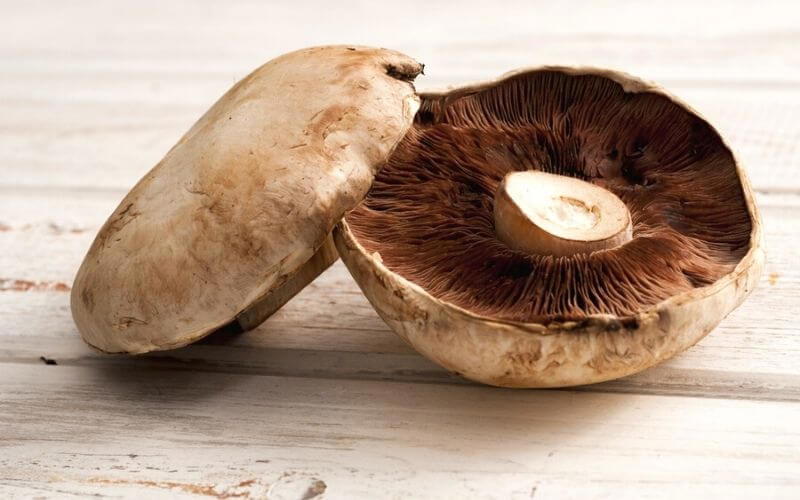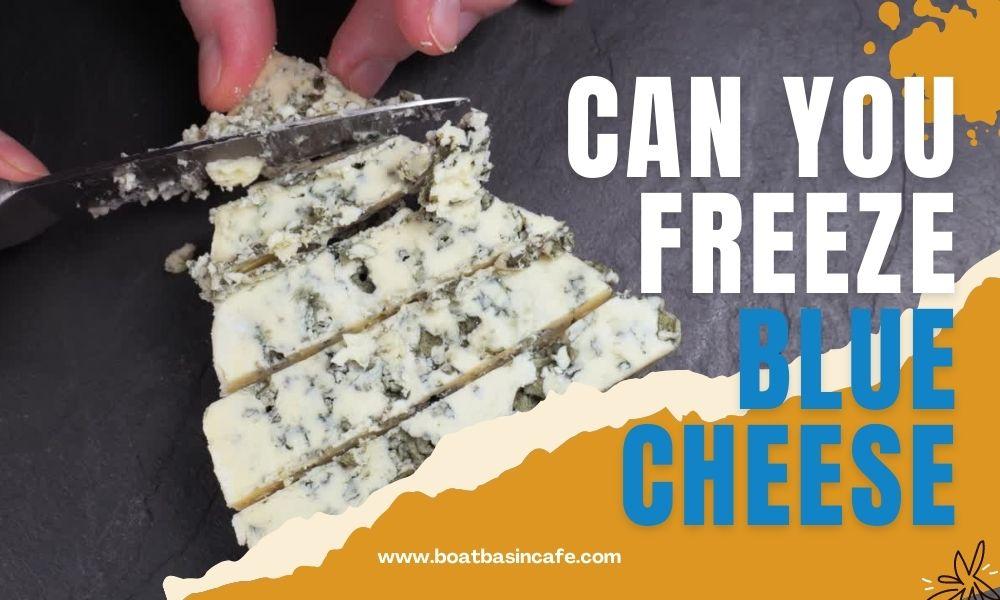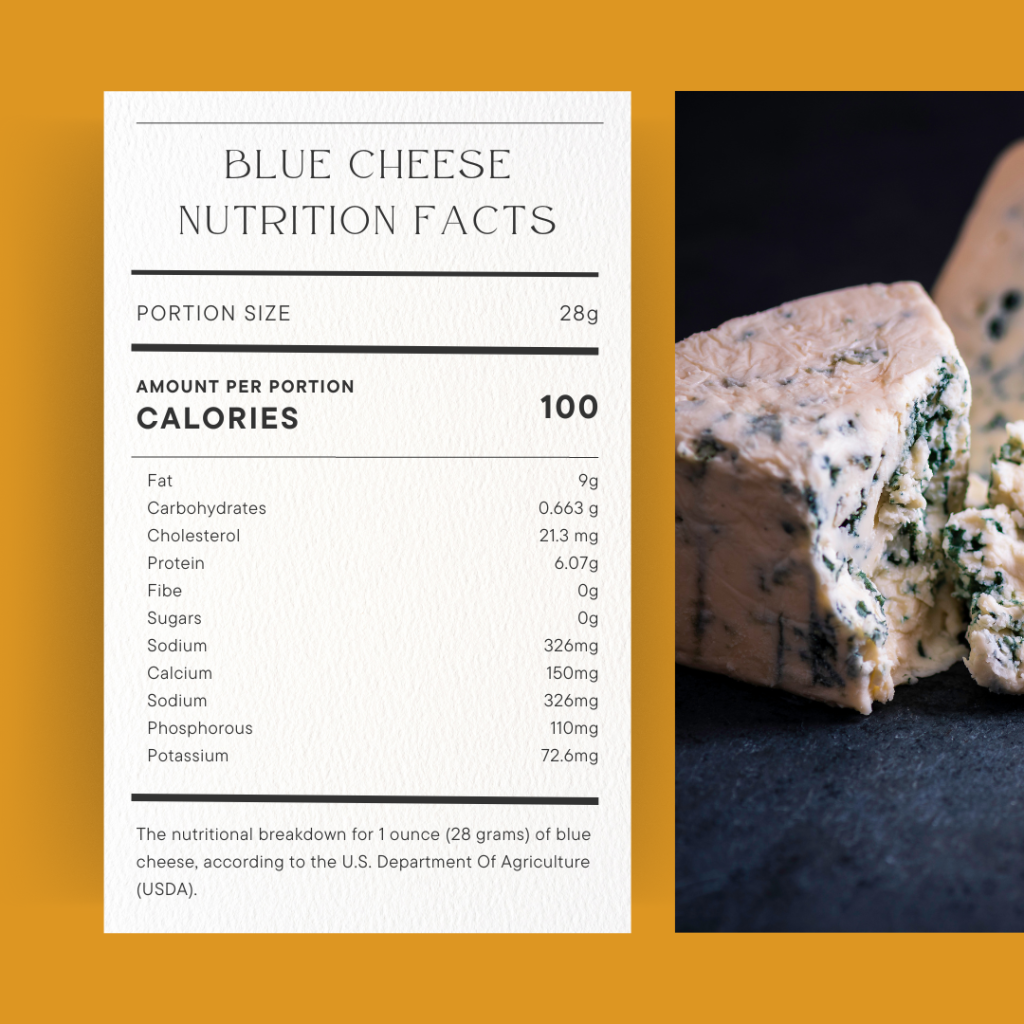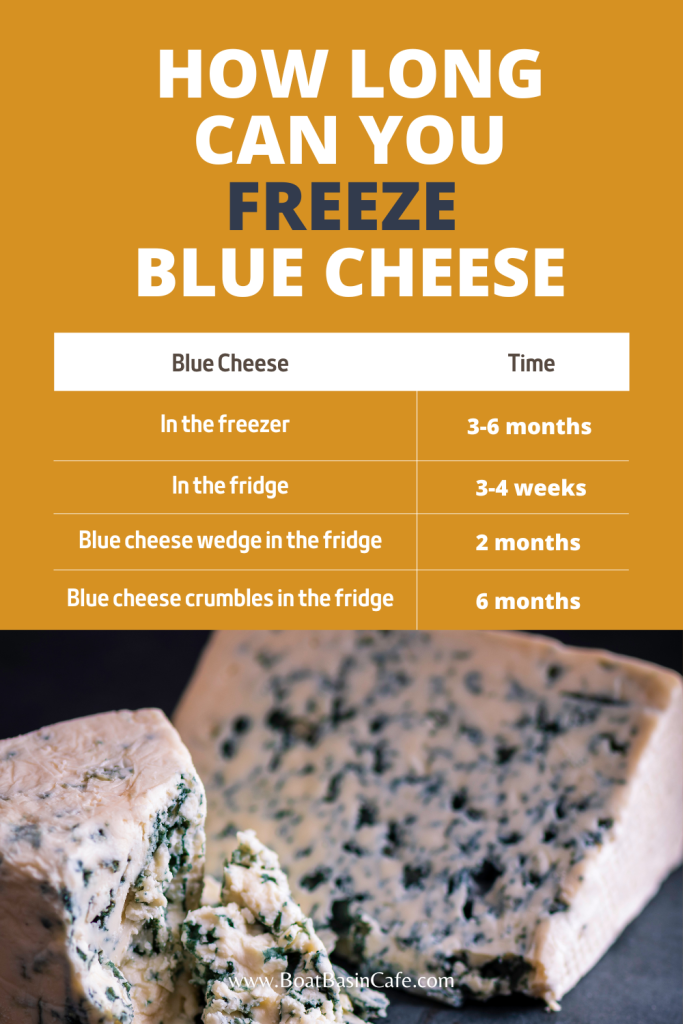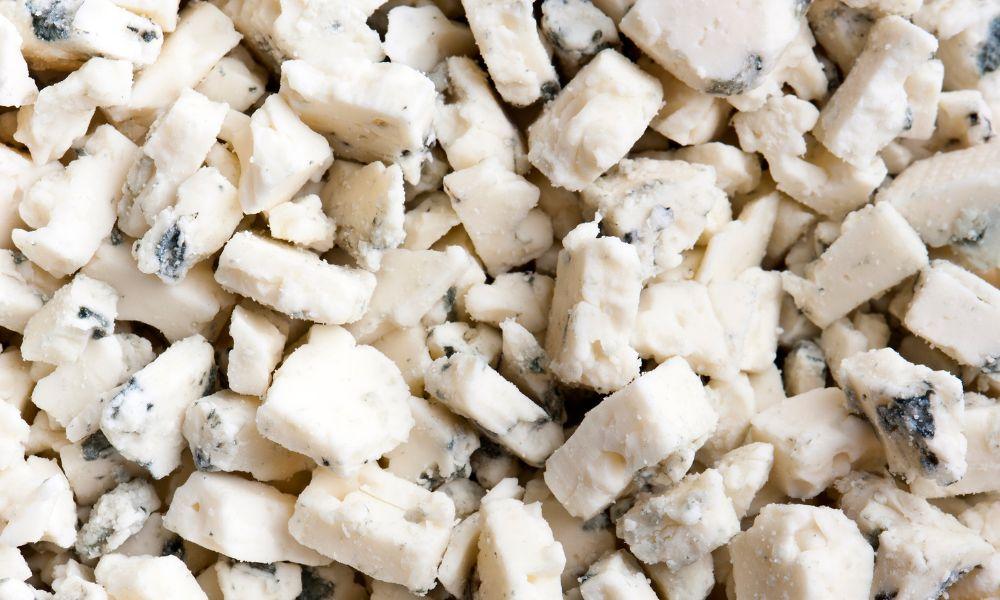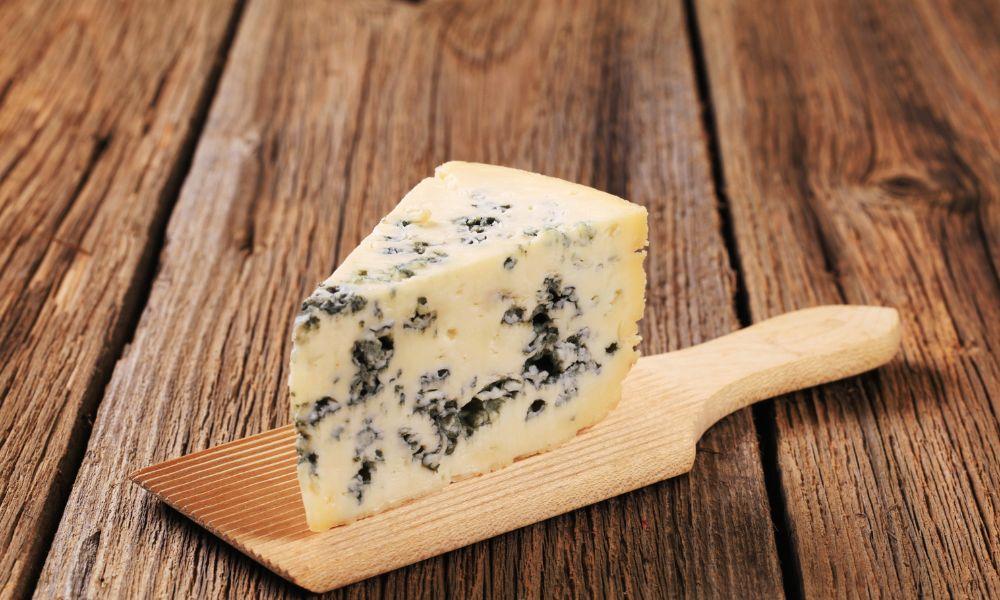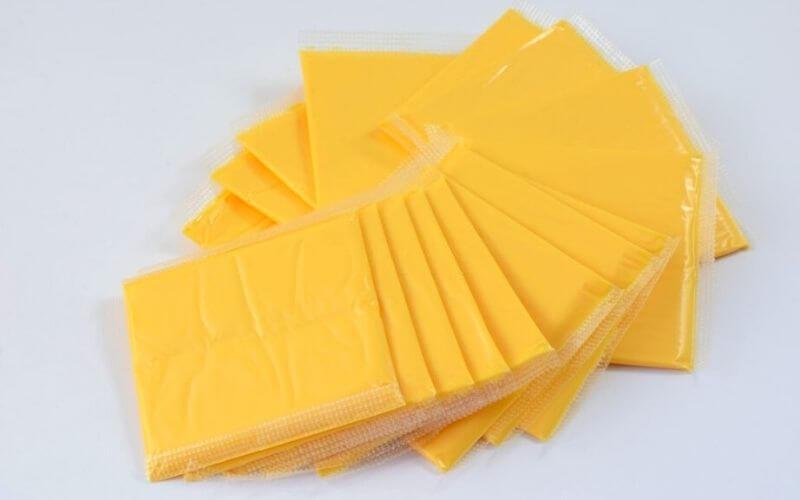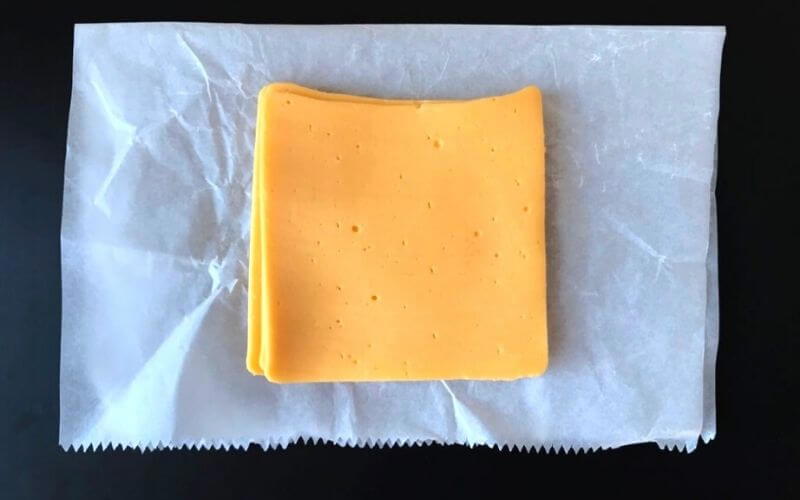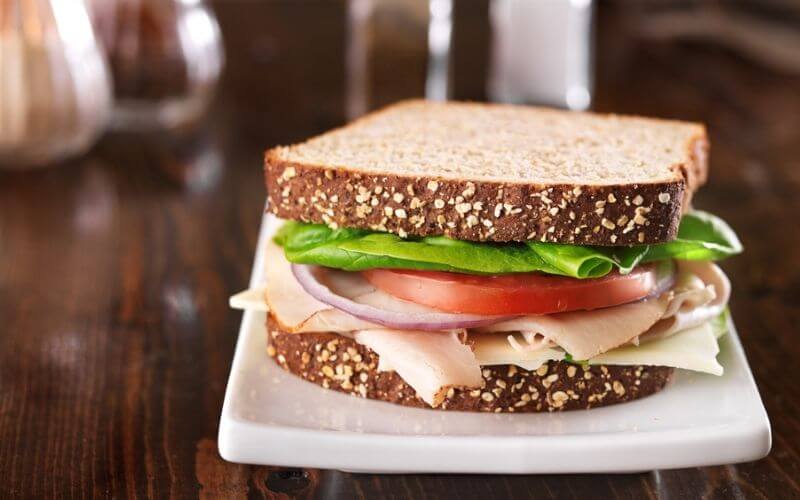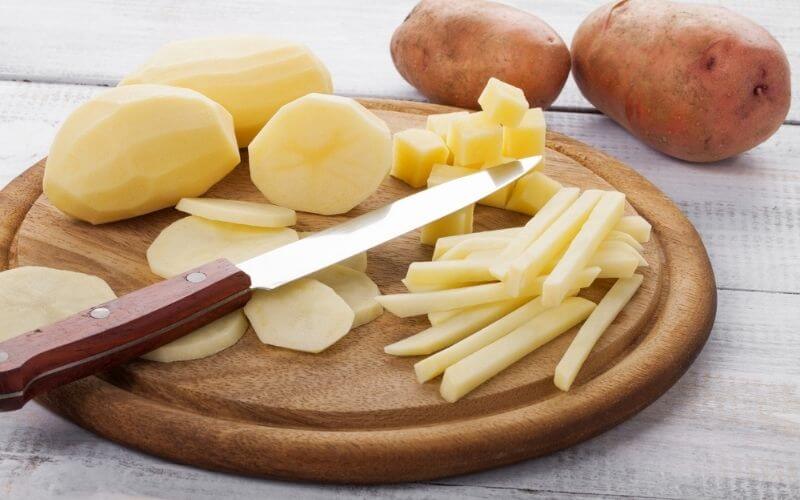Looking for the perfect rice to elevate your sushi-making game? Dive in as we unravel the secrets behind sushi rice and guide you in selecting the best sushi rice brand.
The Importance of Sushi Rice
Ever tried replicating the mouth-watering sushi from your favorite Japanese restaurant without much success? It might not be your culinary skills but the sushi rice brand you’re using. The essence of tantalizing sushi lies in its rice quality and preparation method. Restaurants often have the edge because of their selection of premium sushi rice, combined with the right cooking techniques. With the ideal rice in hand, you’ll master the art of making exquisite California rolls, nigiri, and spicy tuna rolls effortlessly. Let’s embark on this journey to discover the magic behind sushi rice!
Distinguishing Features of Sushi Rice
It’s common to get puzzled by the exclusive requirement of a particular rice for sushi. After all, isn’t rice just rice? Here’s a deep dive into what makes sushi rice stand out:
- Type and Texture: Sushi predominantly uses white short-grain or medium-grain Japanese rice, commonly referred to as Japonica. This variant is notably stickier and rounder than the standard long-grain white rice.
- Starch Content: The sushi rice’s elevated starch content binds the grains, ensuring they hold firm in your sushi rolls. While medium-grain rice could be a last-minute resort, it doesn’t quite capture the finesse of top-tier Japanese restaurant sushi.
- Comparison with Glutinous Rice: Sushi rice is distinct from glutinous rice, the latter being a primary ingredient for sticky rice and rice cakes. In essence, sushi rice needs to be cohesive yet shouldn’t turn excessively mushy.
- Seasoning: Sushi rice undergoes a unique seasoning process. Post-cooking and cooling, it’s laid out thinly. A concoction of Japanese rice vinegar, sugar, and salt is then uniformly drizzled to enhance its flavor profile.
Learn more about sushi rice preservation and shelf-life here.
Why Opt for Sushi Rice?
You might be wondering about the undue emphasis on sushi rice. Let’s delve into its significance:
-
- For Making Perfect Sushi: The taste and texture of sushi are uncompromisable. Ordinary rice just doesn’t cut it!
- Versatility: Beyond sushi, this rice variant is a star in several East-Asian dishes. From crafting delectable onigiri to transforming leftover sushi rice into a delightful fried rice or a creamy dessert like rice pudding, its uses are diverse.
- Health Quotient: Contrary to popular belief, delicious can mean healthy. Loaded with starch, sushi rice, when paired with protein-rich fish, avocado, nori, and other nutritious sushi ingredients, results in a wholesome meal. Its high satiety index ensures you’re full, promoting portion control.
RankPictureNameShops#1
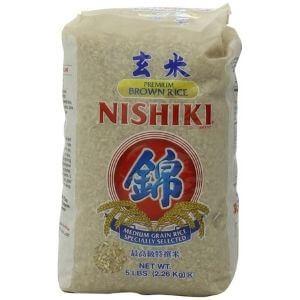
- Dimensions: 2.2 x 6.2 x 11.3 inches
- Weight: 5.1 pounds
- Brand: Nishiki
Read Our Review
Check Price
#2
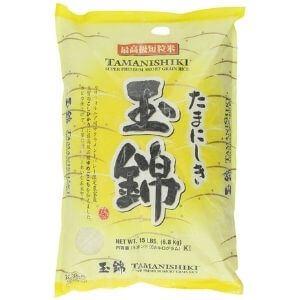
- Dimensions: NA
- Weight: 15 pounds
- Brand: Tamanishiki
Read Our Review
Check Price
#3
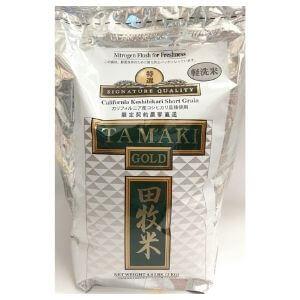
- Dimensions: 5 x 5 x 5 inches
- Weight: 5 pounds
- Brand: Tamaki Gold Short Grain Rice
Read Our Review
Check Price
#4
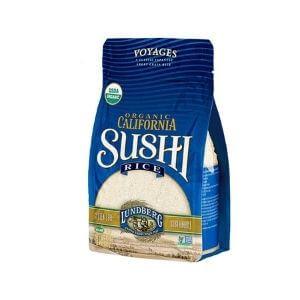
- Dimensions: 9 x 4 x 2 inches
- Weight: 1.65 pounds
- Brand: Lundberg Family Farms
Read Our Review
Check Price
#5
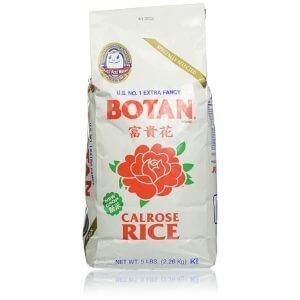
- Dimensions: 4.1 x 5.6 x 10.2 inches
- Weight: 5 pounds
- Brand: Botan
Read Our Review
Check Price
#6
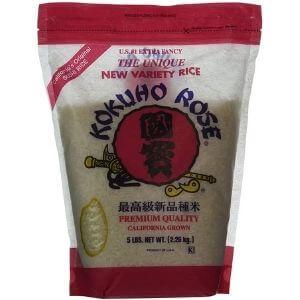
- Dimensions: 12.4 x 5.3 x 3.4 inches
- Weight: 4.95 pounds
- Brand: Kohuko Rose Fancy Rice
Read Our Review
Check Price
#7
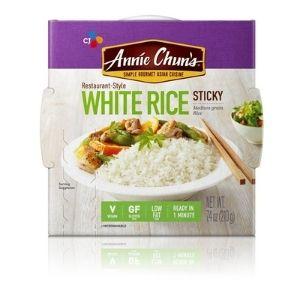
- Dimensions: NA
- Weight: 7.4 ounces
- Brand: Annie Chun’s
Read Our Review
Check Price
#8
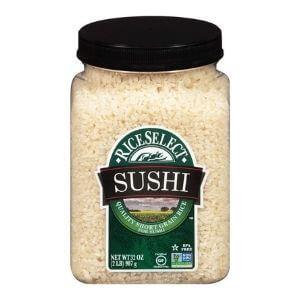
- Dimensions: 8.6 x 8.6 x 7 inches
- Weight: 9.3 ounces
- Brand: RiceSelect
Read Our Review
Check Price
#9
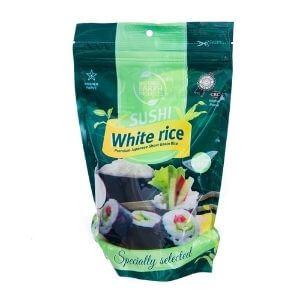
- Dimensions: 7.9 x 4.1 x 1.8 inches
- Weight: 1.05 pounds
- Manufacturer: Natural Earth
Read Our Review
Check Price
#10
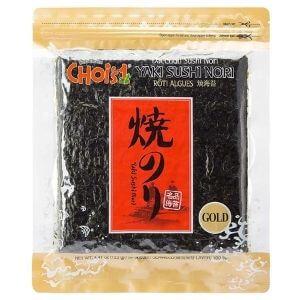
- Dimensions: NA
- Weight: 7.2 ounces
- Brand: Daechun
Read Our Review
Check Price
Best Sushi Rice Brands:
A Quick Summary
01. Nishiki Premium Sushi Rice

Check Latest Price
Editor’s Choice
FEATURES
- Dimensions: 2.2 x 6.2 x 11.3 inches
- Weight: 5.1 pounds
- Brand: Nishiki
Looking for sushi rice with the very best quality? Nishiki has been considered the best kind of sushi rice by both experienced, professional cooks and ordinary folks cooking at home. It’s medium-grain and sticky, but not too sticky. The rice comes in 5-pound bags and is easy to store.
Also, it contains a hint of firmness that allows the grains to stick together perfectly. This helps the rice hold onto the shape of the rolls. It is also described as having a mild, balanced taste, which pairs up wonderfully with the seasoned rice wine vinegar.
Nishiki is produced by a process called musenmai. This process removes the tapioca from the rice grains and coats them with a layer of liquid brine. Once you wash the brine off, you get clean rice that doesn’t need to be rinsed multiple times.
Nishiki is special because it ensures sushi rice with the perfect texture every time. If you are worried about the texture or taste of your sushi rice, or you just hate the feeling of thick, gluey rice, Nishiki is the brand for you. It is easy to cook and not overly time-consuming. The rice has a soft and pleasant taste. Moreover, the taste and texture make it ideal for preparing sushi.
All in all, Nishiki is THE brand if you want to make gourmet sushi at home.
Pros:
-
Perfect texture and the right level of starchiness for making sushi.
-
Mild and delicate taste.
-
Needs only one rinse.
-
Very high quality and easy to prepare.
Cons:
-
Resealing the bag can be difficult after opening.
-
It’s a little more expensive than other brands.
Check the Latest Price for Nishiki Sushi Rice
02. Tamanishiki Super Premium Short Grain Rice

Check Latest Price
Runner Up
FEATURES
- Dimensions: NA
- Weight: 15 pounds
- Brand: Tamanishiki
Want something that tastes great but can also be cooked pretty quickly? Tamanishiki is for those of you who want that authentic Japanese culinary experience right at your dinner table.
Tamanishiki Rice goes through the Musenmai process to preserve and improve the taste of rice after it is cooked. It is also a blend of two different strains of rice, Yumegokichi, and Koshihikari.
The rice is grown in California and has no added preservatives or inorganic fertilizers. Tamanishiki is also used in many Japanese restaurants as it is known for its authentic taste and superior quality.
Unlike many of the other sushi rice brands, this one is best used when making sushi or plain rice, instead of onigiri or sticky rice. It clumps up well, making it easy to scoop up with chopsticks.
The best word to describe Tamanishiki Super Premium Short Grain Rice would be ‘smooth’. This makes its flavor complementary to many other savory or umami flavors, so you can use it to make an almost endless variety of sushi rolls. Like Lundberg, this brand of rice is also gluten-free and is low in cholesterol.
Expensive? Yes. Is it also extremely delicious and convenient? Also, yes. Totally worth it if you appreciate the finer things in life!
Pros:
-
Easy to cook and rinse.
-
It can be prepared in a rice cooker without changing the texture.
-
Works well with savory or umami flavors.
-
Neutral flavor pairs well with other sushi ingredients.
-
Starchy and sticky without being gluey.
-
Gluten-free and low in cholesterol.
Cons:
-
Might taste a little bland to some people.
-
This rice is on the pricier side.
Check the Latest Price for Tamanishiki Grain Rice
03. Tamaki Gold California Koshihikari Short Grain Rice

Check Latest Price
FEATURES
- Dimensions: 5 x 5 x 5 inches
- Weight: 5 pounds
- Brand: Tamaki Gold Short Grain Rice
This Japanese short-grain rice is extremely popular among sushi enthusiasts. Tamaki is produced using a combination of traditional farming methods and modern milling technologies.
It tastes amazing and will work well when making both sushi and onigiri. Tamaki is known for its excellent quality and many customers swear by the taste and texture of this brand.
This short-grain rice is finely milled and loved by those who enjoy gourmet meals. The rice kernels are silky and moist which translates to fluffy, textured grains after cooking. The short-grain variety has a slightly firm exterior but a softer, gummy interior.
The best part? This rice has the ability to retain its texture and flavor for a long time after being cooked.
Tamaki is specially harvested for making sushi rice. The rice also undergoes the musenmai milling procedure which gives it the perfect texture for making sushi.
Tamaki is a little cheaper than Nishiki, so it’s a solid option if you want something on a budget. Besides, if you want the filling and seasoning of your sushi rolls to stand out, this is the brand of rice for you. Texture is the best thing about Tamaki rice. Soft, smooth and sticky, it is a dream to assemble your rolls with this rice.
If you are still experimenting with different rice brands and sushi recipes, it would be worth your while to add this to your next grocery list. If you don’t mind waiting a long time for your rice to cook, go for it!
Pros:
-
Excellent taste.
-
Perfect texture and stickiness for sushi.
-
It can be used to make other dishes as well.
-
It has a low glycemic index.
-
It can be cooked in a rice cooker without affecting the taste/texture.
Cons:
-
Might seem bland to adventurous eaters.
-
Takes a long time to soak and boil.
Check the Latest Price for Tamaki Grain Rice
04. Lundberg Family Farms Organic Sushi Rice

Check Latest Price
FEATURES
- Dimensions: 9 x 4 x 2 inches
- Weight: 1.65 pounds
- Brand: Lundberg Family Farms
Organic sushi rice is actually a thing. Lundberg Family Farms has been making sushi rice since 1937, and they have a lot of very satisfied customers.
The rice is grown in the USA and is high in protein and fiber. This sushi rice is gluten-free and the perfect choice if you’re allergic to gluten or have Celiac disease.
Lundberg family is also organic and non-GMO; so, if you prefer a ‘green’ pantry, this brand was made for you. It is also known to be Kosher. The rice is also grown under environment-friendly conditions and follows the rules of sustainable farming.
This rice comes in a 32-ounce bag and has been grown especially to make sushi. The rice is of a very high quality and will please even the pickiest sushi enthusiasts.
Lundberg promises and delivers a slightly sweet, sticky rice of a near-perfect quality. It is also pretty easy to roll out and is excellent for making California or even Philadelphia rolls.
This Japanese short-grain rice has been a classic choice for many people when making sushi. The combination of mild and nutty is what makes so many people love the taste of this rice. Lundberg’s rice is also known for its fresh, clean smell; it lacks the thick, cloying starchy fumes that many kinds of short-grain rice often have.
The simple-to-follow cooking instructions, the sticky texture, and the healthier, organic production of Lundberg’s sushi rice makes it an amazing choice when cooking Japanese dishes.
Pros:
-
It has a sweet, nutty flavor.
-
Sticky enough for making sushi rolls.
-
Classic choice for many people when making sushi.
-
Produces fragrant, aromatic rice.
Cons:
-
It takes a very long time to boil.
-
It needs to be rinsed very well before cooking, which can be time-consuming.
-
It can be bland without lots of seasoning
Check the Latest Price for Lundberg Sushi Rice
05. Botan Musenmai Calrose Rice

Check Latest Price
Most Affordable
FEATURES
- Dimensions: 4.1 x 5.6 x 10.2 inches
- Weight: 5 pounds
- Brand: Botan
This rice has been produced in California since 1948 and has only grown in popularity since then. It is a medium grain rice that grows in fertile soil and is carefully processed and milled until it is packaged and ready to be made into sushi rolls.
Once cooked, the rice grains are tender with just the right amount of starchiness. It has a lovely, delicate flavor that blooms when seasoned with rice wine vinegar. Flavor and texture-wise it is among the best California medium grain rice brands you can get.
The packaging is sturdy and makes the rice easy to store and keeps all kinds of vermin out. Although it is reasonably priced, this rice is fancy and tastes like something you’d get at an authentic Japanese restaurant.
Also, the rice is kosher and contains 35 mg of carbohydrate, 3g of protein, and 0.4mg of iron per serving. It cooks quickly and makes for a tasty, sticky bowl of rice once when served. Since it can be quite starchy before cooking, it needs to be vigorously rinsed 3-4 times.
The texture of this rice makes it easy to shape the sushi rolls and it is a good option for people new to cooking. It is also a good starter rice for those who are just venturing into the world of sushi. The mild flavor makes it a great pairing for the umami and savory sushi fillings.
Botan’s sushi rice is affordable, so you don’t have to go hungry for the rest of the month. Besides this, you can also use it to make other rice-based dishes. All in all, it is one of the greatest sushi rice brands out there.
Pros:
-
Rice has a delicate and complex taste.
-
Cooks quickly.
-
It has the perfect texture and stickiness for making sushi.
-
Easy to use and make sushi rolls.
-
Affordable price range.
-
Good packaging.
Cons:
-
The texture can seem mealy to some people.
-
Not the best option if you want a quick-rinse rice.
Check the Latest Price for Botan Rice
06. Kokuho Sushi Rice

Check Latest Price
FEATURES
- Dimensions: 12.4 x 5.3 x 3.4 inches
- Weight: 4.95 pounds
- Brand: Kohuko Rose Fancy Rice
If you aren’t a fan of short-grain rice for some reason, Kokuho is the best sushi rice for you. It has a medium grain, but the same complex flavor and solid quality of its short-grain counterparts.
Kokuho has been carefully bred and grown under ideal conditions to provide premium quality rice. It was first cultivated by the Koda farms in 1963 and has only gained in popularity during the last three generations of the Koda company.
Several other companies have tried to replicate the quality of the brand, but none have come close. Kokuho has higher quality rice and this is because they harvest the newest crop. This is also why the rice has a shorter cooking time.
It produces rice that is plump and airy, while sticky enough to make sushi with. The rice can be made by either boiling or steaming, and will be soft and fluffy either way.
This brand of rice is super convenient; it comes in 5-pound bags and takes only 15 minutes to cook. The best thing about Kokuho Rice Sushi?
How absolutely easy it is to use. Besides the very short cook time, it is almost absurdly simple to turn your cooked rice into neat little maki rolls or nigiri. If you want to make sushi for a large crowd, or eat it frequently, grabbing a bag of Kokuho will definitely make things easier for you.
It’s also a good option if you are new to making sushi from scratch since it is so easy to prepare.
Pros:
-
Kokuho is gluten-free.
-
It is plumper and fluffier than most kinds of sushi rice.
-
Sticky enough to make sushi, musubi, and onigiri.
-
Quick-cooking time.
-
Needs to be rinsed just once.
-
Easy to use and prepare sushi rolls.
Cons:
-
This rice might not be clumpy enough for those who want authentic sushi.
-
The rice needs to be soaked for an hour.
Check the Latest Price for Kokuho Rice Sushi
07. Annie Chun’s Cooked Sushi Rice

Check Latest Price
Gluten-Free, Vegan-Friendly, Low Fat Option
FEATURES
- Dimensions: NA
- Weight: 7.4 ounces
- Brand: Annie Chun’s
Annie Chun’s rice is for the sushi fans and college students who have blown their budget for the month. It’s also ideal for those who want sushi but can’t afford takeout!
This brand of rice is the one you reach for when you crave sushi right now and just can’t wait. It comes in a convenient, microwave-safe container and can be microwaved in just two minutes.
This means it takes the same time to prepare your sushi at home with Annie Chun’s rice as it would to order takeout from the nearest Japanese place. In fact, there’s no need to rinse, soak or boil this rice!
Annie Chun’s rice is also a healthier option for those on the move. They have no added flavoring or preservatives. The 7.4 oz bowl it comes in is also a perfect serving portion for most meals.
We can’t always control when our cravings for sushi will hit us. This rice made the list because of how convenient it is to have on hand. There are no pre-cooking steps needed, just a two-minute cook time. It is easy to use and very quick to cook. While it may not taste as amazing as sushi from freshly boiled rice, it will satisfy your cravings.
Also, a bit of vinegar and soy sauce can fix the taste in a pinch. If you’re going camping or live in a dorm, we advise you to keep a package of this rice with you.
Pros:
-
Very convenient to store and prepare.
-
It can be microwaved in just two minutes.
-
It is low-fat and gluten-free.
-
It contains Gluconolactone, a natural, non-dairy, gluten-free additive that preserves the freshness of the rice.
-
Very sticky and clumpy.
-
It can be used for both sushi, sticky mango rice and rice pudding.
Cons:
-
It is an instant meal, so the quality is subpar.
-
Lacks the flavor of fresh rice.
-
It can have a bitter or chemical aftertaste.
Check the Latest Price for Annie Chun’s Sushi Rice
08. RiceSelect Sushi Rice

Check Latest Price
Gluten-Free and Kosher Option
FEATURES
- Dimensions: 8.6 x 8.6 x 7 inches
- Weight: 9.3 ounces
- Brand: RiceSelect
RiceSelect is a California based rice research company. This brand is known for its gorgeous, pearly looking rice, sold in attractive little jars. The jars are recyclable and environment-friendly.
This rice is non-GMO and has been verified as gluten-free and kosher. It also has no added chemicals or flavoring. The rice is a healthy choice as it is low in sodium and cholesterol.
The soft and sticky texture of the rice makes it perfect for sushi or rice pudding. The best part? The rice has a very short cooking time- it only takes 15 minutes to boil.
It produces soft rice that is chewy and fragrant. The rice is a blend of two varieties, Koshihikari and Calihikari. RiceSelect is a great option because the rice is convenient to cook and tastes amazing in your sushi.
This rice has a distinct sweet flavor and an amazing aroma that will steep through your kitchen as you cook it. The rice has the typical stickiness of most sushi rice. Besides the hint of sweetness, the taste is pretty standard for an Asian brand. This makes the rice pretty versatile- you can use it for thick rice puddings, teriyaki rice bowls, fried rice, and even rice salads.
To sum things up, if you have been making sushi for quite a while and prefer firmer, sweeter grains of rice, RiceSelect will have you covered.
Pros:
-
The rice is non-GMO and has no added preservatives.
-
It is gluten-free and is certified as Kosher.
-
Low in sodium and cholesterol, making it the perfect option for anyone with health concerns.
-
The jars they are sold in are BPA-free and are recyclable.
-
Cooking instructions are easy to follow.
-
The rice has a pleasantly sweet flavor.
Cons:
-
The rice needs multiple rinses.
-
The rice needs to be soaked for an hour.
-
It can be a little dry and not sticky enough for some sushi enthusiasts.
-
People new to sushi-making can find this rice difficult to shape into the rolls.
Check the Latest Price for RiceSelect Sushi Rice
09. Natural Earth Rice Sushi White

Check Latest Price
FEATURES
- Dimensions: 7.9 x 4.1 x 1.8 inches
- Weight: 1.05 pounds
- Manufacturer: Natural Earth
Intimidated by the idea of Japanese-style sushi rice? Perhaps you want to ease your way into preparing sushi and you don’t want to buy the more authentic, high-end brands for experimenting with. Or maybe you have to deal with really picky eaters who want their sushi rice to taste more like something they are used to.
Either way, this rice is easy to work with, and won’t shock your taste buds if you are trying out sushi for the first time. Also, it is both gluten-free and kosher, so people with dietary restrictions can eat it as well. Moreover, this sushi rice is white and short-grain, which means that it isn’t drastically different from the kind of rice used in authentic sushi recipes.
As the rice is specially selected, it is high quality, soft and fragrant. At the same time, it isn’t overly heavy or starchy and it has a pleasant texture. We really liked how the packaging was secure, yet easy to open and resealable. This also removes the need to empty it out into a separate bin or container.
This rice is a great option if you want something simpler and you’re scared of the more exotic-sounding sushi rice brands. Although this rice seems plain at first sight, it is soft, fluffy, and flavorful and will complement the savory and umami notes of your sushi rolls very well.
Besides this, you will find it very easy to roll the sushi into shape using this rice.
Pros:
-
The flavor is mild and tasty, without being overwhelming.
-
The packaging is excellent.
-
Kosher and gluten-free.
-
Easy to portion out and prepare.
Cons:
-
Considered overpriced by some people.
Check the Latest Price for Natural Earth Sushi Rice
10. Daechun (Choi’s1) Sushi Nori

Check Latest Price
FEATURES
- Dimensions: NA
- Weight: 7.2 ounces
- Brand: Daechun
Once you have your sushi rice all sorted out, you’ll need nori for your rolls. Good sushi depends on every element of the dish, not just the rice.
Daechun’s nori is Korean and they are known for their excellent quality of nori. They are ideal for making sushi, onigiri, and musubi.
Nori or seaweed is also very healthy and is a pretty common snack for those on weight-loss programs. It is rich in iodine and low-calorie and that makes it the perfect addition to sushi, onigiri, and even Asian salads.
This nori is very fresh and comes in a resealable bag. This allows easy storage in the refrigerator.
Each nori sheet is 7.5″ X 8.25″, making it perfect for sushi rolls. It has the highest quality and delivers that salty, umami flavor we love in our sushi.
Nori or seaweed is super healthy. It is rich in iodine and low-calorie and that makes it the perfect addition to sushi, onigiri, and even Asian salads. It adds vibrant color to your sushi and its umami notes pair well with the soft, mild-flavored sushi rice.
The nori isn’t overpowering and allows the taste of the fish and rice in the sushi to shine through. It also gives your sushi a bit of crunch and is great on the taste buds.
Pros:
-
Smooth and easy to cut through.
-
High-quality and not greasy.
-
Adds a savory, umami flavor to the dish.
-
It doesn’t have an overpowering taste.
-
Easy to store.
Cons:
-
It’s thin and can tear easily.
-
Very high in sodium and iodine.
Check the Latest Price for Daechun(Choi’s1) Sushi Nori
Buying Guide
Before choosing the brand for your sushi rice, here are a few factors you need to consider:
Stickiness:
Sushi rice should always be a little sticky. It is this stickiness that helps the rice grains hold on to each other in your sushi. Loose grain, hard rice won’t clump up and form the rolls.
Whichever brand of sushi rice you choose, make sure it is clumpy and sticks together after being cooked. Botan rice and Nishiki have just the right level of stickiness.
Texture:
Along with stickiness, the texture is one of the most important features of sushi rice. Choose a rice with a soft, slightly mushy texture; one that will easily stick together and form the sushi rolls.
A softer rice will be easier to fill with nori and protein. It will also be quicker and easier to roll and cut through. Tamanishiki Super Premium Short Grain Rice and Nishiki Premium Sushi Rice are always good options.
Grain Type:
Always select unpolished short-grain Japanese rice or medium-grain California rice for your sushi. While medium grain will work, many people prefer the use of short grain only. Either way, you can’t really go wrong when making sushi with japonica rice.
Starchiness:
You should rinse your rice several times before cooking. Choose a brand that isn’t known for being very starchy. Overly starchy rice will be too gluey and the rice will be almost liquid and again, won’t form the clumps you need for your sushi.
Lundberg Family Farms Organic Sushi Rice has the perfect level of starch that makes the grains clump together.
Cooking Time:
No one has hours to spend rinsing, soaking, and boiling rice. It is best if you choose a rice that only needs a couple of rinses and a soak time that is no longer than an hour. Nishiki Premium Sushi Rice and Botan Musenmai Calrose Rice are both options with a short cooking time.
Taste:
Your sushi rice should have a mild and pleasant flavor. A strong starchy taste will overpower the taste of the seasoning and other fillings.
Rice with a pleasing flavor will also smell delicate and entice an enjoyable culinary experience. Botan Musenmai Calrose Rice and Lundberg Family Farms Organic Sushi Rice both taste great.
Easy Instructions:
The rice should come with simple and straightforward instructions that you can easily follow. They should also specify instructions for using a rice cooker and a guideline on steaming the rice. Nishiki Premium Sushi Rice is known for being extremely easy to prepare.
Some brands also mention incorrect ratios of water or cook times that need to be altered. It would save you time and energy to pick a brand with accurate instructions for a fragrant pot of rice.
Gluten Content:
If you have allergies or celiac disease, it is important that you select a rice brand with no gluten. Although rice is gluten-free, some brands include corn as an ingredient in sushi rice to fortify it.
Most non-GMO, organic brands like Lundberg Family Farms Organic Sushi Rice and RiceSelect are gluten-free, but it’s always a good idea to check the packaging.
Best by Date:
While many chefs say rice has an indefinite shelf life, it’s best to pick a brand that’s best by date is a few months away. After opening your sushi rice, make sure you store it somewhere dry and dark, in an air-tight container. You can also store it in the fridge to keep it fresh longer.
Frequently Asked Questions (FAQs)
01. Can I Substitute Long-Grain Rice for Sushi Rice?
No, long-grain rice does not have the amount of starch needed to make sticky, clumpy rice. Using long-grain won’t make sushi, because the grains won’t stick together. Long-grain rice also doesn’t have the taste that we associate with sushi.
02. Is Short-Grain Arborio Rice a Sushi Rice Substitute?
Many people have arborio in their pantry and think it can be used as sushi rice in a pinch. This is because arborio and sushi rice have a similar shape and size. Although arborio is also a kind of short-grain rice, it has a much higher starch content than japonica. This makes arborio extremely gluey and glutinous when boiled like sushi rice. It also turns very sticky once cooled.
03. What’s the Best Way to Store Sushi Rice?
Any kind of rice should be stored in airtight containers, either glass or plastic. This is to prevent bugs from getting in. To keep the rice fresh, keep your container in a dry place, away from direct sunlight. If you don’t use the rice frequently, you can store it in the fridge to keep it fresh longer.
04. How Long Does It Take to Cook Sushi Rice?
This differs from brand to brand. Some brands of rice require a shorter soaking time. Many brands call for a 30-minute soak to improve the texture of the end product. On average, your sushi rice should take around 20 minutes to boil. After it has simmered for 20 minutes, reduce the heat to low and let the rice steam for an additional 15 minutes. However, some brands of rice need to be cooked for longer to get the right texture.
05. Can I Skip the Multiple Rinses if I’m in a Hurry?
If you’re using a brand like Nishiki or Tamanishiki Short Grain Rice, you can get away with just one rinse. Most brands do require rinsing properly in running water until the water is no longer cloudy. This might take a couple of minutes. Rice that isn’t rinsed properly will smell and feel starchy and the texture of your sushi rice will be too sticky and glutinous. Properly rinsing your grains can do wonders for both the taste and feel of your sushi rice.
06. How Much Water Should I Use to Cook My Sushi Rice?
The typical ratio of water to rice is 1.2:1. That means you use a little more water compared to rice. For example, if you use 100g of rice to make sushi, boil it in 120ml of water. Some kinds of rice need more water. Lundberg Farm’s Organic Sushi Rice tends to be browner than most conventional sushi rice needs to be boiled in twice the amount of water when compared to the rice.
07. Why is My Rice So Clumpy and Sticky?
If your rice is too mushy to work with, chances are you overcooked it or used too much water. Also, leave your rice uncovered and let it cool after cooking.
Closing Thoughts
Sushi can be a little tricky to get right the first few times. The trick to great sushi lies in the brand of rice and the cooking techniques you use. This article walks you through both; how to pick the best sushi rice brand for your needs and how to prepare it.
All that remains is a little experimentation and tweaking the recipes to your taste. Once you get going, you’ll be able to effortlessly assemble gorgeous rolls of sushi, whether they’re maki, uramaki or even temaki cones.
Sushi is totally worth the time and effort; whip up a dish of colorful rolls and you can impress the harshest food critic. Happy cooking!
More Related Product Reviews:
Relevant Reads
Table of Contents
Related Posts
